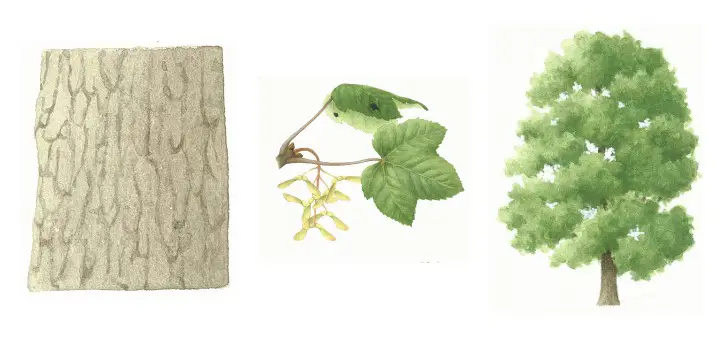Sycamore
Sycamore

The sycamore tree was brought over from France in the Middle Ages. It was often planted to shelter and shade farm houses, as it can withstand salty winds. Its name in Latin is Acer pseudoplatanus.
Sycamore timber was popular for kitchen surfaces and utensils too, since it doesn’t stain or taint food and stays smooth, even after a good scrub. Its ability not to stain cloth meant it was also ideal for textile rollers.
Facts and stats
- Uses: The pale cream timber is usually without a marked grain, making its finely grained pieces in high demand today for making violins and furniture veneers.
- Seeds: The sycamore seeds profusely and its winged seeds, set in pairs, usually fall together spinning round like helicopter blades.
- Leaves: Its leaves often have ‘tar spots’ caused by the fungus Rhytisma acerinum.
- Bark: The sycamore has smooth grey bark and develops rough flat surface plates that fall away to reveal orange-brown bark below.
- Height: It’s broad tree with dense foliage reaching 25 metres.
- Lifespan: 200 years
- Natural range: central and southern Europe, north to Paris